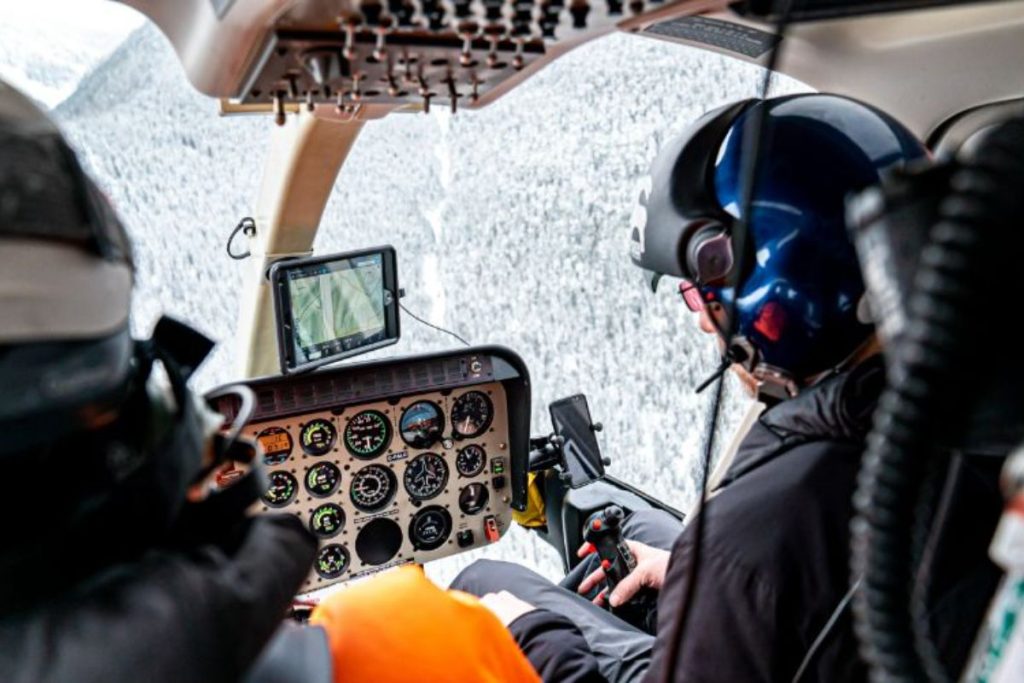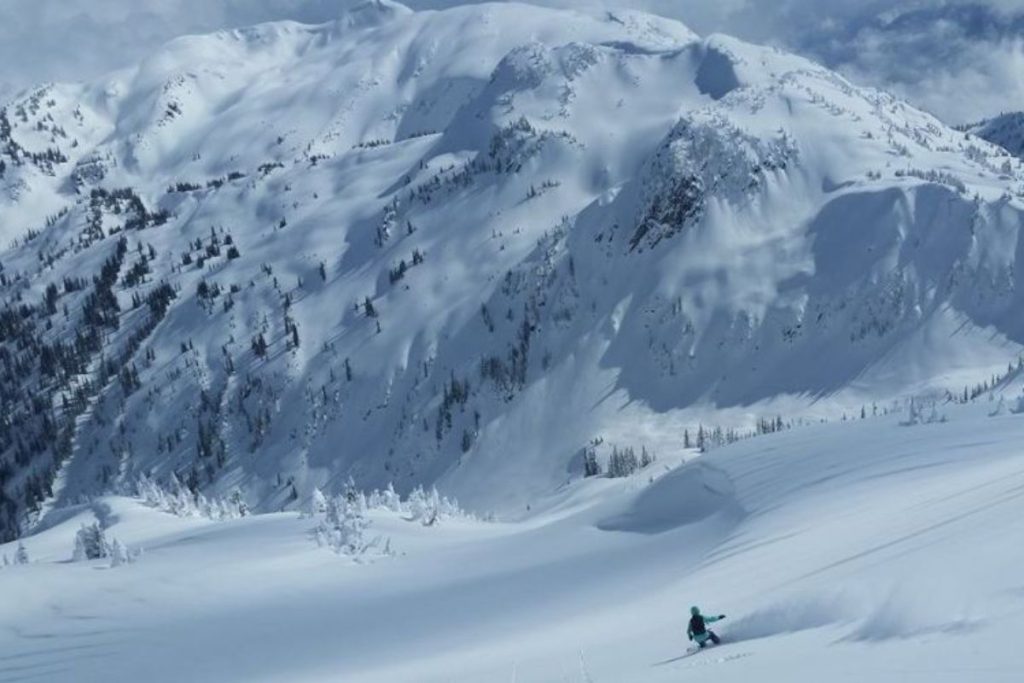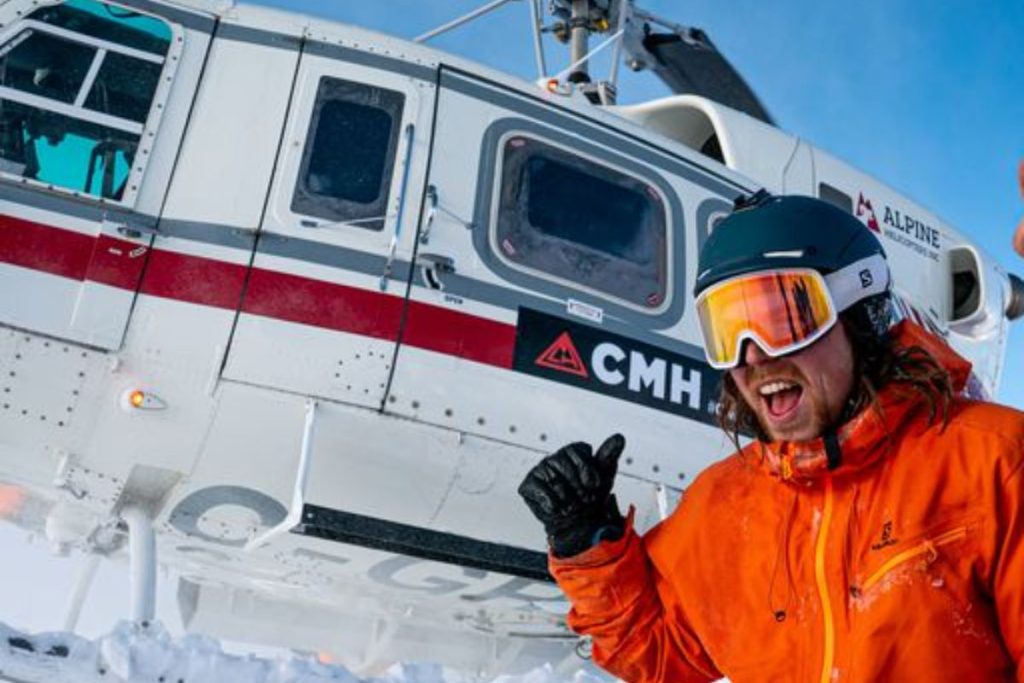Taking off on a helicopter skiing adventure is an appealing prospect to many, and Pure Powder is here to help tailor the trip of a lifetime according to your ski level to ensure a safe and thrilling experience. In this brief read, we will be covering our Canada helicopter skiing trip options, hosted by CMH Heli Skiing, the world’s leading heli ski operator, as well as their dedication to safety and some of the risks and hazards involved with these heli skiing trips.
While no skiing adventure is 100% safe, you can rest assured that Pure Powder and our partners at CMH take every precaution to ensure your safety on our heli skiing trips. Keep reading for a quick rundown of some things you need to know regarding safety on the slopes and how CMH and Pure Powder have got your back.
Helicopter Skiing In Canada With CMH
Organising a helicopter skiing trip in Canada has never been easier thanks to the Pure Powder team and our dedication to client support. When you book your CMH trip through us, you have plenty of options at your disposal – from our popular Signature Helicopter Skiing, with room for groups of 11 guests, to our Private Heli Skiing option and more. Opt for an Introduction to Powder Skiing if you’re new to the scene or choose our Small Group programme if you want a fast and flexible option. Whatever you choose, you can be sure that Pure Powder will offer you support every step of the way – before, during, and after your trip.
When partaking in a Pure Powder-prepared helicopter skiing trip in Canada, you will be accompanied by a professional CMH guide (or multiple guides) who, along with your pilot, is highly skilled and trained for the job. Your pilot will evaluate the area and determine the most suitable place to touch down, getting you safely to your starting point so that you can enjoy untouched power and a sensational skiing experience.
Alongside this, your guide/guides will constantly evaluate the terrain and snow conditions, keep an eye on group dynamics, and lead you to the safest and most fulfilling ski spots. This way, they are able to mitigate risks and reduce potential hazards, so you can enjoy the helicopter skiing experience of a lifetime stress-free. With all of this in mind, however, nature is oftentimes unpredictable, and while your guides will put all of their expertise into minimising the dangers, incidents can still occur.
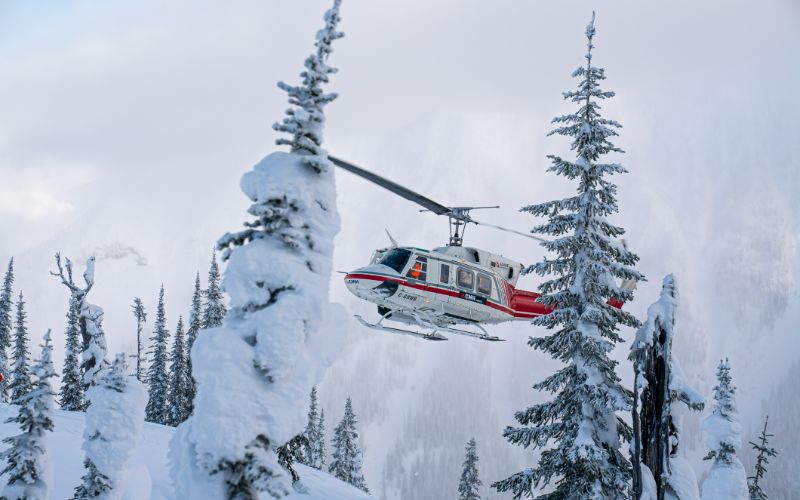
Helicopter Skiing Risks And Hazards
As any heli skiing veteran will tell you, heading into unmarked, ungroomed terrain comes with a certain level of risk. When heli skiing in Canada on a Pure Powder ski trip, you will be taking on the slopes out in the wilderness and experiencing some of the most consistent and reliable heli skiing on the planet. While this is incredibly exciting, it’s important to keep the potential risks and hazards in mind – to ensure both your own safety and that of the entire group.
Here are just a few potential dangers and risks that come part-in-parcel with helicopter skiing out in the backcountry:
Avalanches: When skiing in backcountry areas outside of resort-controlled contexts, there is a higher risk of encountering avalanches than there is on groomed slopes. Avalanches are naturally occurring events common in mountainous regions where significant snowfall occurs. The frequency and risk of such an occurrence is highly dependent on the local terrain, the weather patterns, and the snow conditions. Regardless, CMH ski guides go through extensive avalanche safety training and have a comprehensive understanding of how to use avalanche safety gear when necessary. They are also familiar with the local terrain, meaning they can effectively avoid potentially risky areas and know exactly what to look out for.
Moreover, skiers can be assured that they will be guided to the safest terrain based on their guide’s assessment of snow conditions and the forecasted risk in that particular location. In all instances, skiers can be assured that recovery plans are in place to protect customers and personnel. When embarking on a CMH helicopter skiing trip, alongside mandatory safety training that will fill you in on what to do should an avalanche occur, you and your group will also be equipped with essential safety tools, including a CMH backpack, transceiver, probe, shovel, and radio. You will also be able to practice using them so that you are fully prepared for any incident out on the slopes.
Tree Wells: Tree wells are a common hazard on backcountry slopes, especially when skiing in the remote wilderness. In areas where there are many trees, it is common for deep voids or depressions to form around the base of certain trees. These depressions are often difficult to see, as the snow usually covers them, and when you’re travelling quickly down a slope, it can be challenging to tell how far the depression extends around the tree. As mentioned, before heading out on your trip, you and your group will undergo safety training that includes how to avoid falling into one of these wells as well as what to do if another member of your group encounters one.
These wells are also one of the reasons why ski guides often insist on the buddy system, as safety really does exist in numbers. Regular check-ins ensure that everyone is accounted for and that help is always accessible. Your guide will be nearby with their essential safety equipment too, so should a skier encounter a tree well, they will be swiftly and effectively assisted. Established communication procedures and safety protocols will help to avoid any incidents in the first place, but you can rest assured that all possible mitigatory steps will be taken to avoid potential accidents.
Helicopter Hazards: It’s important to listen to your guides and pilots when it comes time to embark and disembark the helicopter. All CMH helicopters share common hazards and safety procedures; primary hazards include the main rotor and tail rotor of the helicopter, and it’s important to keep a safe distance from both. Because of deep snow or uneven ground, the main rotor can dip below head height, and while spinning, both the main rotor and tail rotor can be difficult to see.
Rather than risk injury, only approach or disembark the helicopter when given the go-ahead by your guide. Adding to this, when a helicopter is landing to pick you up, despite the intense gusts it produces, it’s important to keep an eye on the helicopter at all times and remain kneeling within the pilot’s field of vision.
Safety On A CMH Helicopter Skiing Trip
Your CMH guides are professionals in the helicopter skiing industry and have dedicated their careers to managing the inevitable risks and hazards of wilderness skiing. While they are there to do their utmost to ensure your safety, it is also your own responsibility to listen to your guides and pilots and help manage these risks.
By listening to your guide’s instructions and following their lead, you can do your part to reduce the risks that come with skiing in a backcountry environment. It’s also important to note that your guides are there to keep you safe, and you are free to ask them questions or ask for clarification on any instructions that you may not understand.
With that in mind, here are a few quick safety tips to remember when preparing for a CMH helicopter skiing adventure:
Let Your Guides Lead The Way: Whether you are skiing in a large group or with one or two of your friends, it’s important to always follow directly after your guide and not wander off on your own. The wilderness is vast and unpredictable, and getting lost is a lot easier than one may think. Moreover, your guide will lead the way down the mountain, as they are clued up on the safest routes that can get everybody to the bottom without incident – it’s important to never ski ahead of or ride in front of your guide unless you are instructed otherwise.
Locate Tracks And Use Safety Equipment: If you ever lose sight of your guide or get separated from your group, the best course of action is to head back to where you last saw their tracks. On the chance that you can’t locate said tracks, don’t keep wandering about or proceed downhill, as you might find yourself in a dangerous area. Rather, pull out your radio, contact your guide, and sit tight until rescue arrives.
Don’t Be Afraid To Take A Break: While the Pure Powder team will do our best to match you up with a ski trip that aligns with your ability level and ski fitness, fatigue can still set in when you’re tackling the slopes. If you find yourself becoming fatigued, don’t be afraid to let your guide know, take a break, and consider heading back to the lodge as soon as an opportunity arises. After all, there’s no need to push yourself past your limits and risk injury. If you’re worried about not being up to the task before embarking on your trip, you can also consider taking part in our ski fitness programme to get your body ready to take on the slopes.
Consider Ski Insurance: While insurance is not included in any Pure Powder trip, it is of utmost importance that you have valid insurance coverage for your needs. To read up on ski insurance when preparing for your trip, click here.
A Few More CMH Safety Precautions To Put Your Mind At Ease
Snow Safety Team: All CMH destinations have access to a dedicated snow safety guide. This industry-leading practice involves a snow safety guide operating separately but in coordination with your guided heli skiing programme, assessing snowpack and avalanche safety, evaluating terrain, and seeking out the very best snow conditions for you to throw yourself into. All of this information is then relayed to the guide who is leading your expedition, so they have current information to spearhead a safe and enjoyable ski trip.
Weather And Avalanche Forecasting: CMH also stays on top of weather and avalanche forecasting, making use of data collected via remote telemetry weather stations to make informed decisions regarding safe travel along the mountainside. All of this real-time data assists CMH in orchestrating the ideal ski trip and contributes to ensuring that your heli skiing adventure continues without a hitch.
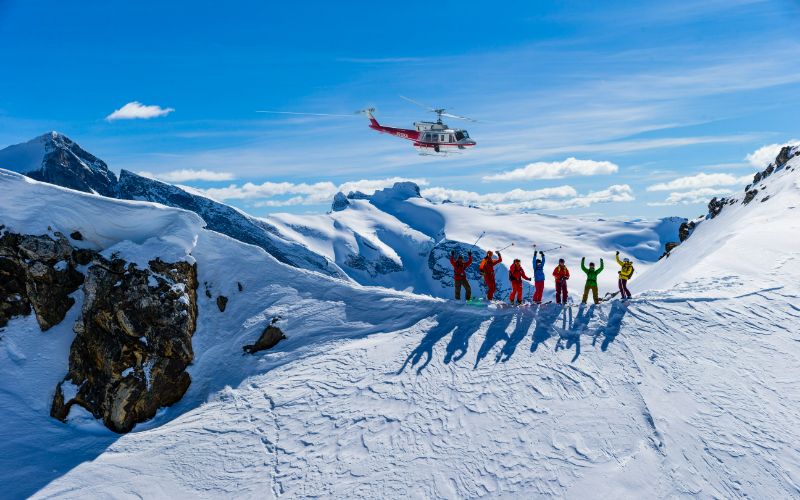
Safety Briefing And Equipment: CMH also insists on mandatory safety training and briefings before you take part in a heli skiing trip. This training involves everything from how to avoid and handle incidents on the slopes to safety equipment and how to use it. You will also be briefed on how to safely move around the helicopter, and, most importantly, you won’t be hurried along. After all, you’re going on a heli skiing trip to have fun, and both CMH and Pure Powder want you to have the time to take it all in.
Emergency Response: While the need for emergency response is a rare occurrence on a CMH helicopter skiing trip, you can rest assured that there are rapid response protocols in place should the situation call for it; the snow safety team will often be around to drop in and offer assistance; your guide can call on neighbouring CMH destinations for help; and these destinations are all remotely connected to an operations team in the Banff head office, which can offer reliable support.
Exhilaration and a once-in-a-lifetime adventure are guaranteed when readiness outweighs danger. So, if you have been considering taking off on a heli skiing trip in Canada, we encourage you to look through our CMH trip options and sign up for an unforgettable experience!
